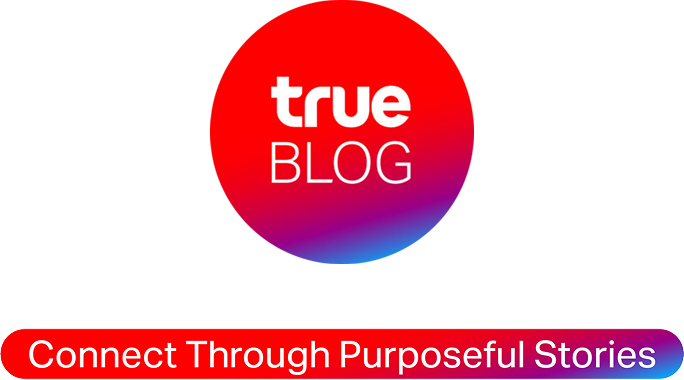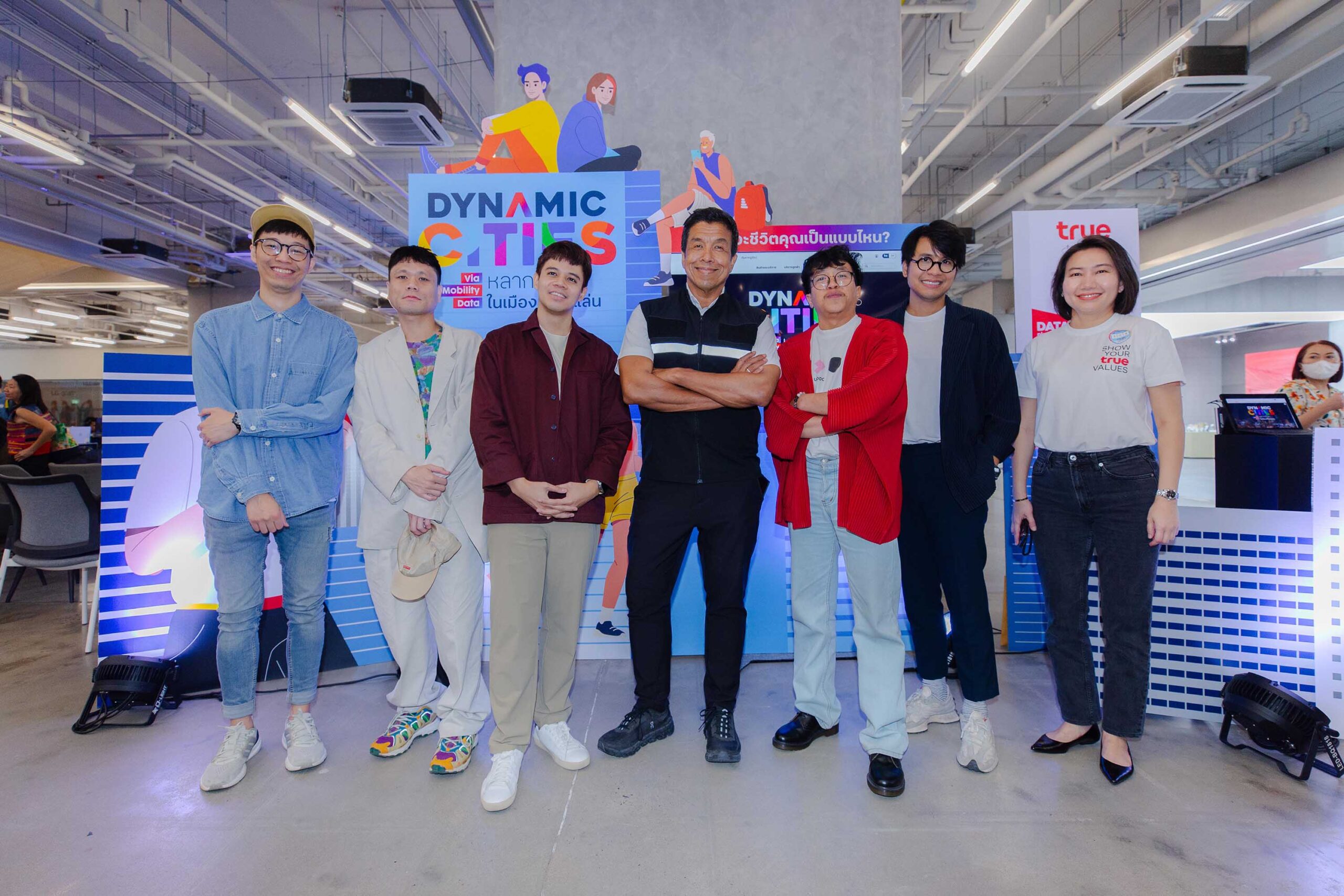“Dynamic Cities via Mobility Data: Diverse Lives in Vibrant Cities” is the first project under Data Playground for Human Impacts, providing a collaborative space for individuals interested in using mobility data to create positive social, economic, and environmental impacts.
March 27, 2025 – True Corporation utilizes mobility data collected from mobile phone usage and digital service platform interactions under strict personal data protection standards. The company is fostering collaboration with academic institutions, government agencies, and civil society organizations to unlock new possibilities for urban development and inform public policies that align with people’s behaviors.
Today, True launched a partnership with the Urban Design and Development Center (UddC) at Chulalongkorn University under the project “Dynamic Cities via Mobility Data: Diverse Lives in Vibrant Cities.” By analyzing mobility data, the initiative seeks to understand the rhythm of urban life, raising new questions about the relationship between city structures and people’s lifestyles. This collaboration ultimately aims to design more livable cities for everyone.
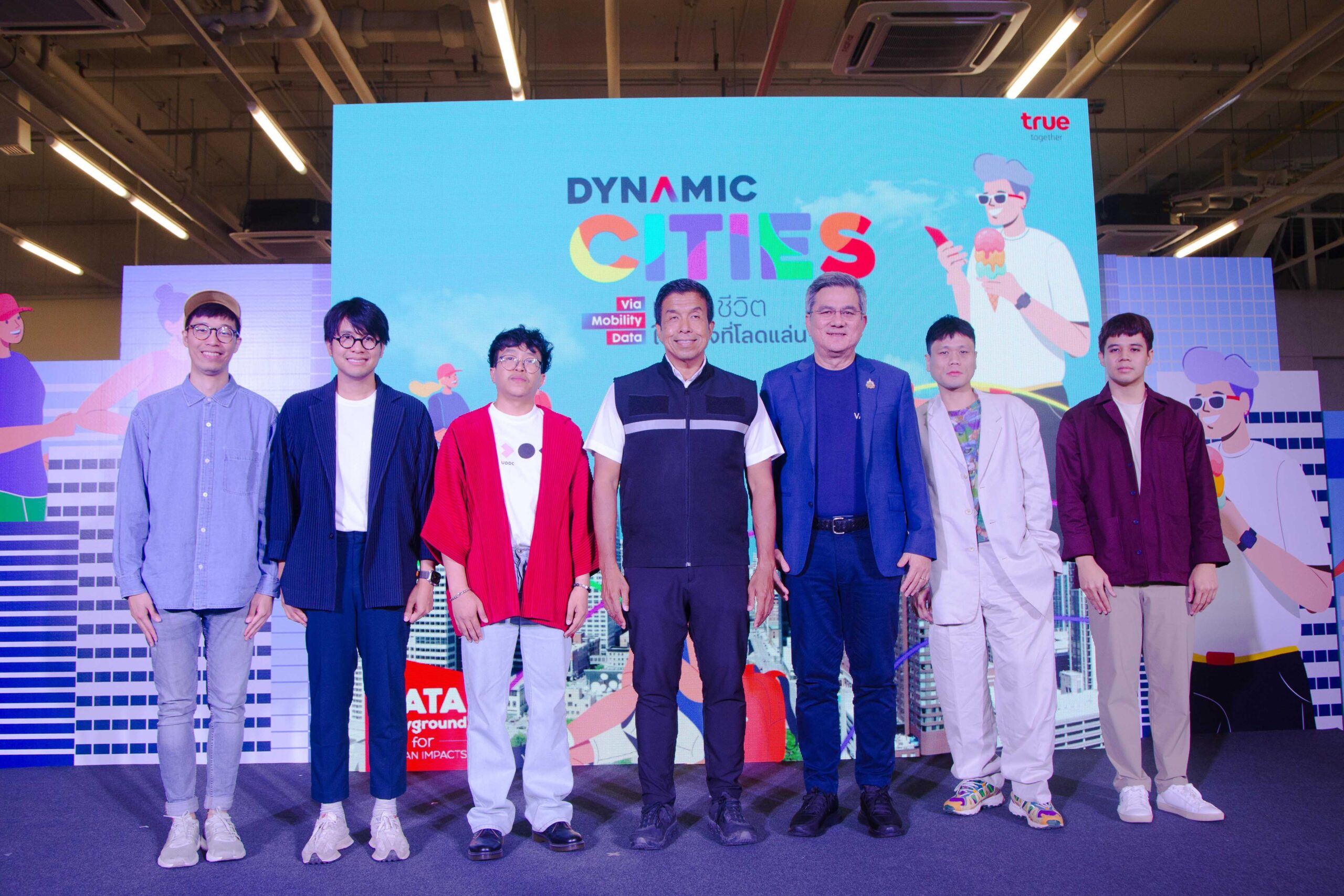
The study revealed fascinating insights into people’s behaviors and urban dynamics across three key dimensions:
1. Urban Space Dimension
Mobility data provides a clear view of the primary spaces where people spend their daily lives of residential areas, workplaces, and spaces for leisure or social activities. By categorizing these spaces based on actual behavioral patterns in different cities, the study uncovers diverse regional lifestyles. This new perspective can guide urban planning and development to better reflect the complexities of real-life urban living.
2. Time Dimension
The data highlights disparities in time usage across cities, particularly in large metropolitan areas like Bangkok, where long commuting hours reduce time for rest and social activities. These differences in time allocation offer valuable insights for assessing quality of life and optimizing how people spend their time in various locations.
3. Urban Behavior Dimension
When analyzed by age groups, the data reveals distinct lifestyle patterns across cities. For example, working-age individuals in Bangkok often travel long distances to the city center, whereas those in Chiang Mai and Hat Yai tend to stay within their local neighborhoods. Meanwhile, elderly populations generally remain within familiar areas. These insights emphasize the opportunity to design cities that cater to all generations, especially as aging societies continue to expand.
Mobility Data: A New Perspective on Cities
As a leader in Thailand’s digital network and technology sector, True Corporation recognizes that data and advanced technology can drive social impact beyond just communication. Mobility Data serves as a powerful tool for understanding modern cities, offering real-time insights into people’s behaviors and movements across different spaces and times with accuracy and depth. The “Dynamic Cities via Mobility Data: Diverse Lives in Vibrant Cities” project marks a significant step in leveraging this potential to bridge data-driven insights with urban development, shaping cities that truly reflect the way people live.
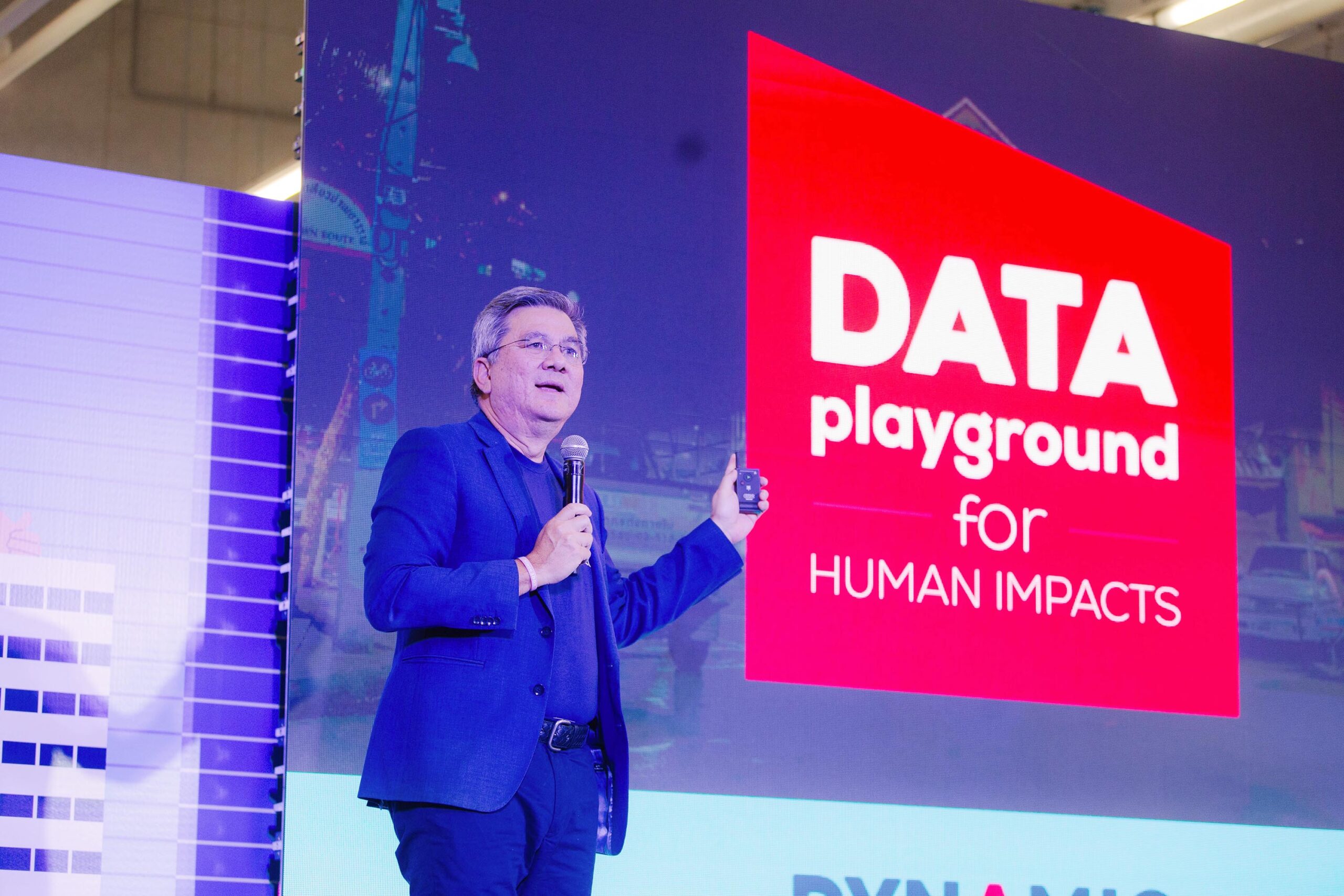
Mr. Chakkrit Urairat, Chief Corporate Affairs Officer of True Corporation Plc., said that “True believes that advanced technology and modernized networks should go beyond communication. They should create meaningful benefits for society as a whole. The ‘Dynamic Cities via Mobility Data: Diverse Lives in Vibrant Cities’ project demonstrates the power of Mobility Data in understanding how people live in urban spaces. This marks the beginning of using digital technology as a tool to co-design cities that are livable for everyone. We are committed to bridging technology with urban life and will continue expanding collaborations to drive Thailand’s cities toward a better future for all.”

Urban Insights Driving Public Policy Change
Mr. Adisak Guntamueanglee, Duputy Director, Urban Design and Development Center (UddC) at Chulalongkorn University and lead data analyst for the project, emphasized that “Mobility Data provides a deeper understanding of cities in ways that traditional data cannot, particularly by reflecting real-time human behavior.” He highlighted key insights from this study that could inform urban design strategies and drive more targeted public policies to create inclusive cities.
“This study allows us to see a detailed picture of urban life. For example, we found that residents in Bangkok spend significantly more time commuting compared to other provinces, reducing their personal and leisure time after work. In contrast, people in Chiang Mai and Khon Kaen tend to live and work within closer proximity, showing a stronger connection between residential areas, workplaces, and social spaces.”

“Elderly populations primarily stay within their neighborhoods and rarely appear in distant public spaces, reflecting structural limitations in urban accessibility and safety. As Thailand transitions into a fully aged society, this trend raises important questions about its long-term impact on the economy, social dynamics, and public health. Additionally, the study sheds light on the role of third places, public spaces where people gather, socialize, or take a break from daily routines. In some cities, these spaces remain insufficient or operate on schedules that do not align with actual urban behaviors.”
“These behavioral insights can be translated into concrete public policies that directly address citizens’ needs, whether by extending public park hours, optimizing public transportation schedules to match actual usage patterns, or planning senior-friendly spaces in densely populated residential areas. A well-designed city is not just about mapping out spaces or urban planning concepts; it must be shaped in alignment with how people truly live.”, Mr. Adisak said.
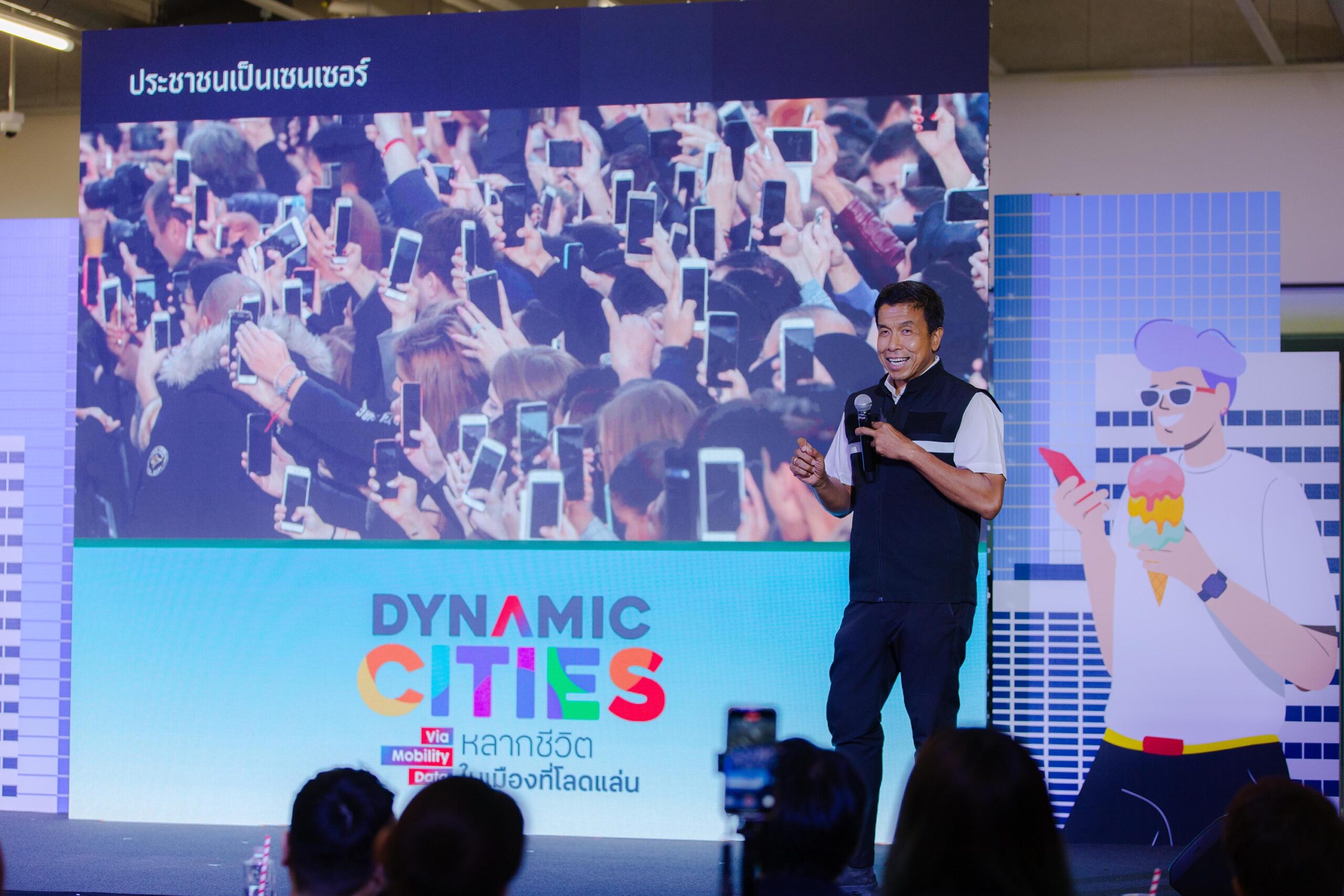
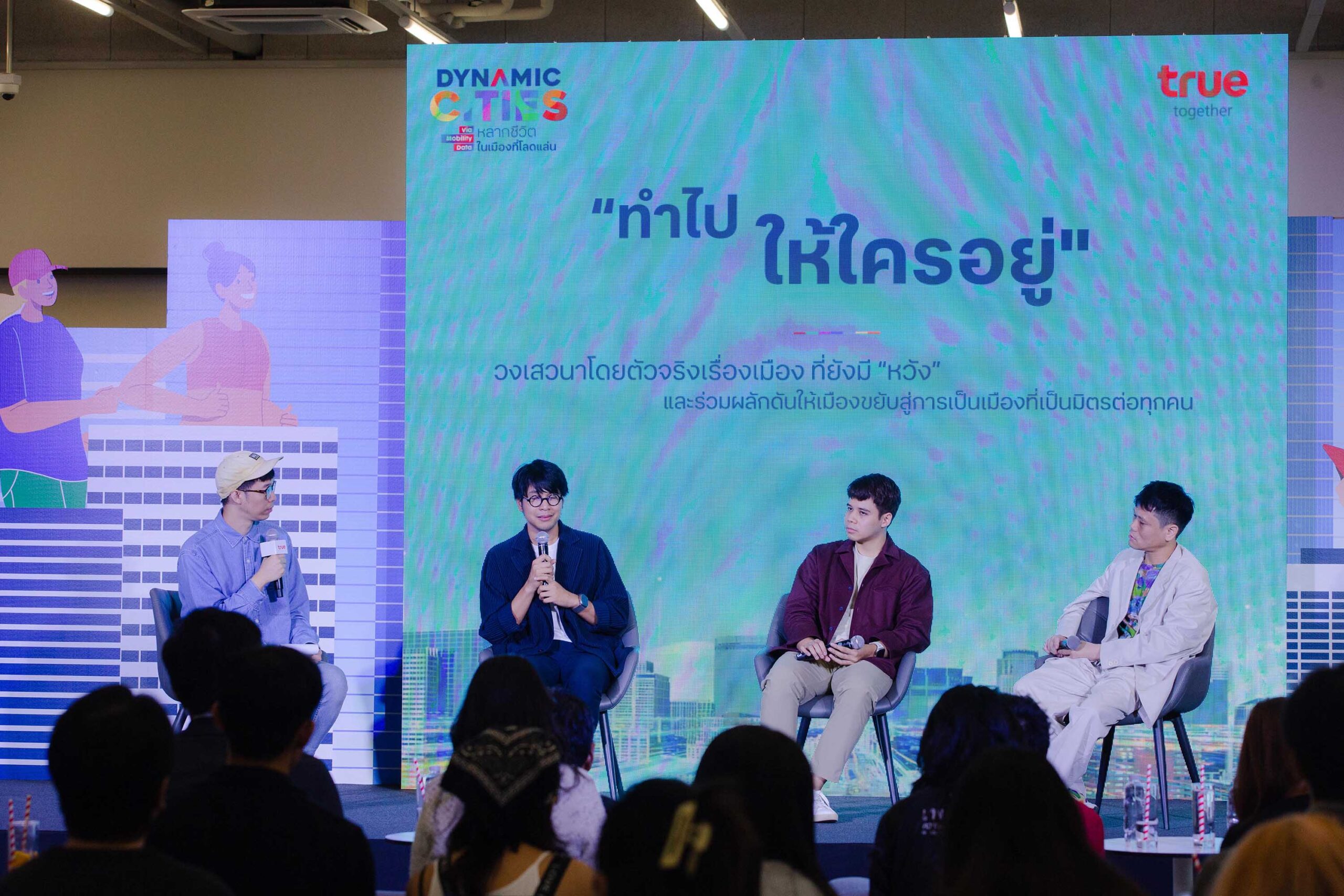
About Data Playground for Human Impacts
Data Playground for Human Impacts is a collaborative space where academic institutions, government agencies, civil society, and various sectors come together to analyze mobility data from mobile phone usage and digital service platforms. Operating under strict personal data protection standards, this initiative aims to explore urban challenges from fresh perspectives, inspiring new possibilities for economic, social, and environmental development. By leveraging data-driven insights, the project contributes to the design of more effective and precise public policies that align with real-world human behavior.
Learn more about Data Playground for Human Impacts at https://true.th/blog/about-data-playground/

